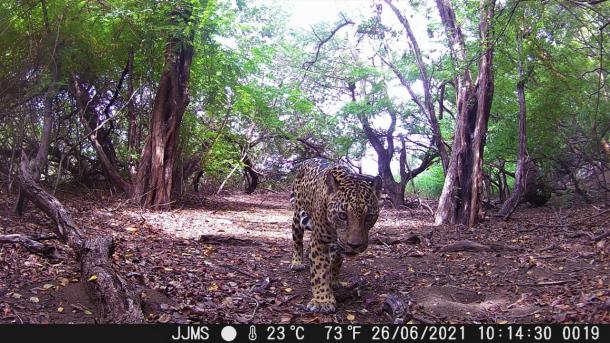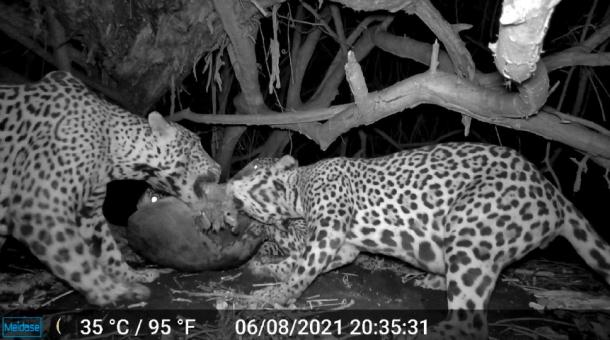
A female jaguar in Área de Conservación Guanacaste. Photo by a camera trap.
A new report details the findings of jaguar and sea turtle monitoring research along the coast of Área de Conservación Guanacaste (ACG). The report, by turtle biologist Luis Fonseca López and others, covers the time period 2005-2021. Overall, the study shows that the coast of ACG is potentially important habitat for jaguars and could harbor one of the most relevant populations for Costa Rica. The data find that the jaguar population has grown exponentially, going from 0 jaguars detected between 2005 to 2009, to 20 jaguars during 2021. According to Fonseca, “Without a doubt, the restoration of the dry forest and the increase in connectivity with the upper part [of ACG] during the last 51 years is reflected in the increase in the jaguar population. In addition, I believe that the Fire Management Program has also played a fundamental role in the recovery of this feline.” The study cites the abundance of sea turtles throughout the year, as well as additional prey in the forests, the geographic isolation, the availability of water sources, and scarce human presence as other key reasons for the robust jaguar population. It also notes that the jaguars do not rely exclusively on turtles for food, although turtles do play an important role in their diet. Fonseca adds that it will be important to conduct other studies similar to this one in other parts of ACG, as well as genetic studies to determine the degree of kinship between individual jaguars.

Two jaguars feed on a sea turtle. Photo by a camera trap.